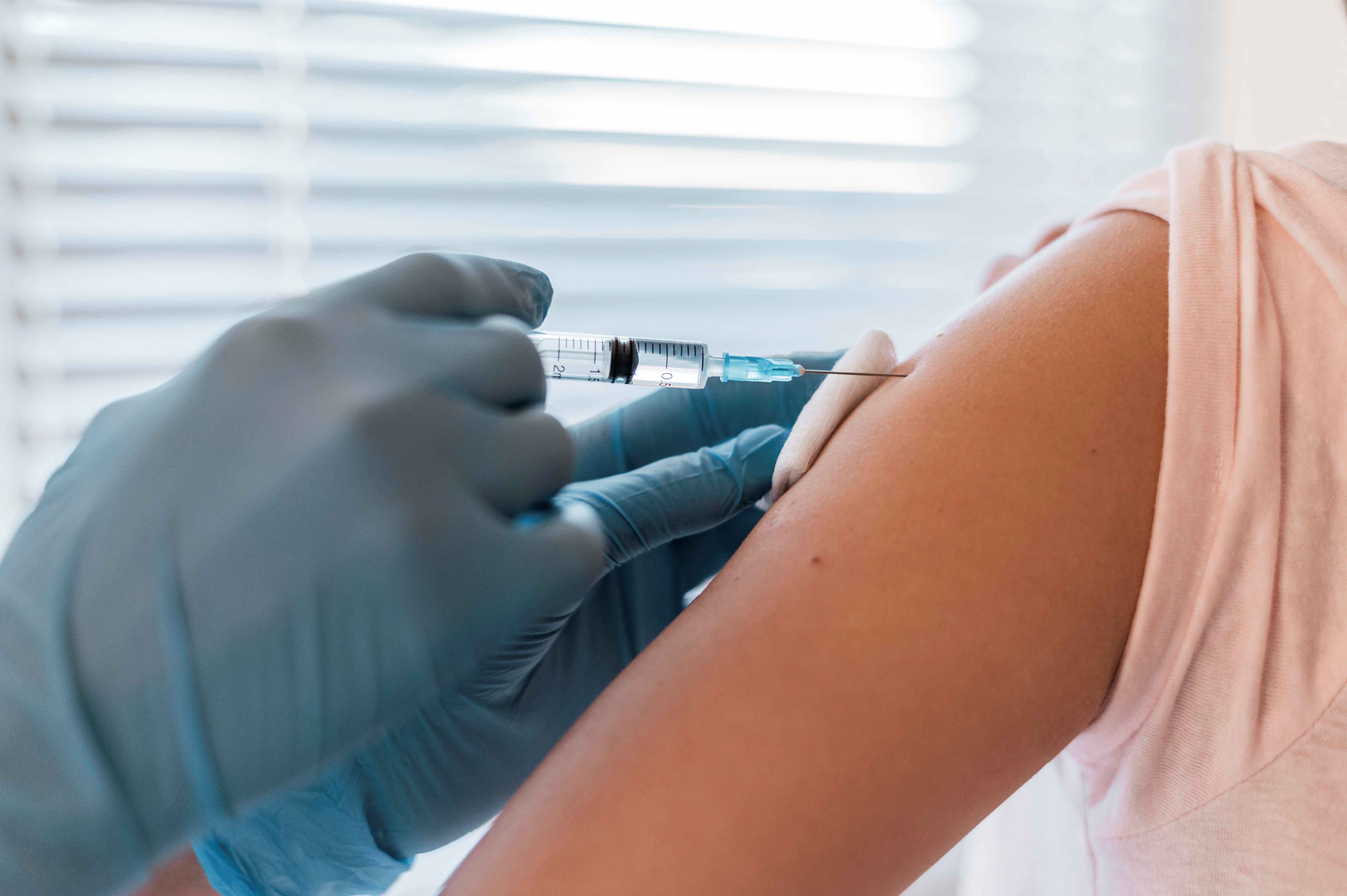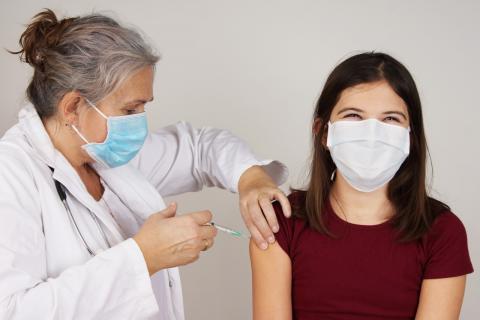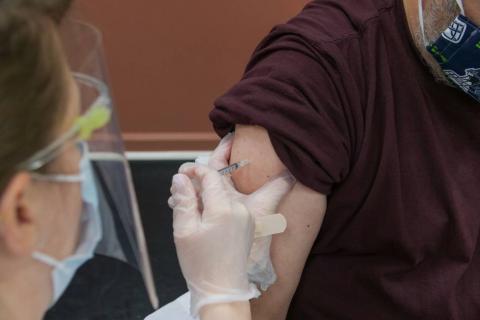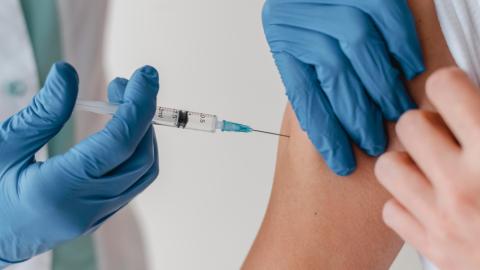The vaccine booster may be more effective if administered in the same arm
An Australian team has conducted a study involving mice and humans that suggests that vaccine boosters would be more effective if administered in the same arm as the previous dose, at least in the short term. However, other recent research has pointed in the opposite direction. The results are published in the journal Cell.

Ángel Hernández Merino - brazo vacuna EN
Ángel Hernández Merino
Pediatrician and collaborator of the Advisory Committee on Vaccines, the Spanish Association of Pediatrics and the Spanish Association of Primary Care Pediatrics
This is an interesting study on a novel question: when administering booster doses of a vaccine, is it better to do so in the same arm or does it matter which arm is used?
The publication in question finds that administering the booster in the same arm as the previous dose improves the antibody response in the initial phases after administration, although after four weeks the response observed is similar when the booster dose is administered in the same arm or in the opposite arm. It uses a complex methodology involving a first laboratory phase in mice and a second phase with a limited number of human volunteers who receive two doses of a SARS-CoV-2 mRNA vaccine, the second in the same or opposite arm. The authors hypothesise that a subset of memory B cells remain in a specific area of the lymph node located in the region near the injection site and are activated early after the booster dose is administered.
The hypothesis is worth investigating because, if true, it could improve the effectiveness of vaccines at no cost and perhaps reduce the amount of antigen they contain.
However, the issue is far from clear. Other publications have reported preliminary results in the same vein, but others have found the opposite. The answers are therefore still a long way off. It is too early to propose changes to vaccination guidelines establishing that booster doses should be administered in one limb or the other.
Ignacio J. Molina Pineda - brazo vacuna EN
Ignacio J. Molina Pineda
Professor of Immunology
The specific immune response, both from T lymphocytes (responsible for cellular immunity) and B lymphocytes (responsible for antibody production), takes place in the so-called secondary organs of the immune system, which include the lymph nodes. After immunisation, antigen-presenting cells residing in the different layers of the skin capture the antigen and must migrate to the nearest lymph nodes. There, they begin to present the antigen until they find a B cell that recognises it, activates and begins to produce antibodies, ultimately generating memory cells that will activate upon a second encounter with the same antigen.
The Australian study has shown that re-immunisation in the same area where the first contact with the antigen occurred leads to a faster and more effective immune response. The reason is that the cells residing in the lymph nodes in the area, especially memory B cells, would have a greater response capacity because they are in a pre-sensitised environment that has already responded to that antigen.
The elegant study not only demonstrates the dynamics of the response in animal models, but also verifies it in a group of volunteers who underwent vaccination against SARS-CoV-2 (COVID-19). Although people who were re-immunised in the same arm responded more quickly and effectively than those immunised in the contralateral arm, this difference tended to neutralise over time. Therefore, while contralateral immunisation will also be effective in the long term, this discovery may be important in a pandemic setting, where rapid and powerful protection of the population is required.
Jaime Jesús Pérez Martín - brazo vacuna EN
Jaime Jesús Pérez Martín
Specialist in Preventive Medicine and Public Health, Deputy Director General of Public Health of the Region of Murcia and President of the Spanish Association of Vaccinology
The study has two clearly distinct parts: one conducted on mice, which would not be of practical interest until the data is confirmed in humans, and the other conducted on humans: 30 people, divided into two groups of 20 and 10, respectively, which seems like a small sample size to draw definitive conclusions (it may be useful for generating hypotheses). There is one part that seems clearly incorrect, which is when Figure 6H refers to ‘expected vaccine efficacy’: to date, it has not been possible to predict efficacy against COVID-19 based on antibody titres.
It provides new information on some immunological aspects, but this is of little practical application in the current context. There are some articles published on this subject, one of which supports the results of this study, while another says that the result would be similar when vaccinating the same limb as the opposite limb.
Another article published in The Journal of Clinical Investigation [which gave results contrary to the current one] is suggestive because the sample size is almost 1,000 people, which gives it significant statistical power. However, the diversity of results in different studies tells us that this is still an issue without sufficiently firm evidence and that more research is needed.
The difference between immune response and clinical protection must also be taken into account. Many results measured by immune response do not translate into greater or lesser clinical protection against the disease. In other words, in general, we always prefer a stronger immune response, a higher antibody titre, etc., but this does not necessarily translate into better clinical protection (for example, there are vaccines that have what we call a protective correlate: the antibody titre value at which we are considered to be protected. Well, theoretically, you always prefer a higher titre, but in practice, once the immune response, which we consider protective, has been achieved, having higher titres does not translate into greater clinical protection).
For all these reasons, the results must be put into perspective, because there is currently conflicting data between different studies and because, even if they were consistent, we would have to put that data into context with regard to whether or not there is greater clinical protection. Nevertheless, these are interesting data that will need to be investigated further.
[Regarding possible limitations] Perhaps the greatest limitation is the small sample size (30 people) and the short follow-up period, with other studies on this topic having a much longer follow-up period.
Dhenni et al.
- Research article
- Peer reviewed
- People



